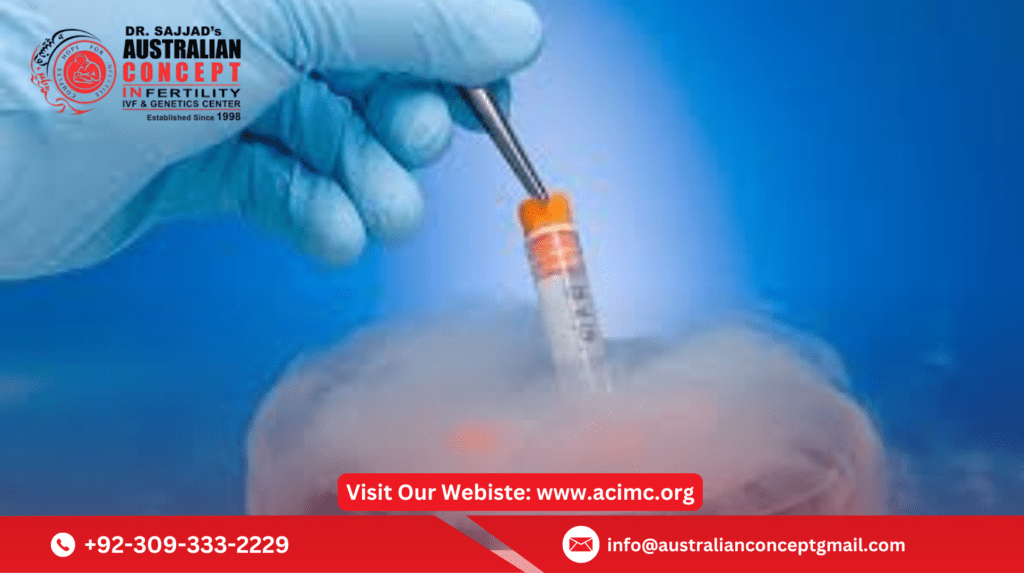In vitro fertilization (IVF) has helped millions of couples worldwide achieve their dream of parenthood. One of the most critical steps in the IVF process is embryo transfer, where a fertilized embryo is placed into the woman’s uterus. This stage is quick and usually painless, but it plays a major role in determining the success of the entire IVF cycle.
If you’re preparing for IVF or simply want to understand how it works, this article explains what happens during embryo transfer, how to prepare for it, and what to expect afterward.
Understanding the Embryo Transfer Stage
Embryo transfer is the final step of the IVF treatment cycle. After eggs are retrieved from the ovaries and fertilized in a lab, the resulting embryos are cultured for several days. When one or more embryos are ready, they are transferred into the uterus to establish a pregnancy.
The goal is for the embryo to implant into the uterine lining and develop into a healthy pregnancy.
Step-by-Step Process of Embryo Transfer
1. Embryo Selection
On the day of transfer, the fertility specialist will examine the embryos and choose the most viable one(s) for transfer. In some cases, preimplantation genetic testing (PGT) may have already been used to check for genetic health.
Embryos are usually transferred on Day 3 (cleavage stage) or Day 5 (blastocyst stage) after fertilization. Blastocyst transfer is more common, as it has a higher implantation potential.
2. Preparing the Uterus
Before the procedure, the uterine lining is checked via ultrasound to ensure it is thick enough for implantation. If you’re undergoing a frozen embryo transfer (FET), hormonal medications may be used to prepare the endometrium.
3. Embryo Transfer Procedure
-
The procedure takes about 10 to 15 minutes and is typically done without anesthesia.
-
You will lie on an examination table in a position similar to a pap smear.
-
A speculum is inserted to view the cervix.
-
A thin, flexible catheter is loaded with the embryo and passed through the cervix into the uterus.
-
The embryo is gently released into the uterine cavity under ultrasound guidance.
The process is painless for most patients, though some may feel mild cramping or pressure.
What to Expect After Embryo Transfer
Once the transfer is done, you may be asked to rest for a few minutes at the clinic. Contrary to common belief, bed rest is not necessary after the procedure unless advised by your doctor.
1. Post-Transfer Symptoms
Some women may experience:
-
Mild cramping
-
Light spotting
-
Bloating
-
Breast tenderness
These symptoms are usually due to hormonal medications or the body’s response to the embryo.
2. Luteal Phase Support
You will be prescribed progesterone supplements to support the uterine lining and aid implantation. These may be taken orally, vaginally, or through injections.
3. The Two-Week Wait
This is the most emotionally intense phase of the IVF journey. It takes about 10 to 14 days after embryo transfer to determine whether the procedure was successful. A blood test (beta-hCG) will confirm pregnancy.
Avoid early home pregnancy tests during this period, as they may give misleading results due to residual hormones.
Tips for a Successful Embryo Transfer
-
Follow all medication instructions carefully. Hormonal balance is crucial during this phase.
-
Maintain a healthy lifestyle. Eat well, stay hydrated, and avoid stress.
-
Limit physical exertion. While you don’t need strict bed rest, avoid strenuous activities or lifting heavy objects.
-
Communicate with your doctor. Report any unusual symptoms like severe pain, heavy bleeding, or fever.
Success Rates and Considerations
The success of embryo transfer depends on various factors such as:
-
Age of the woman
-
Quality of the embryo
-
Thickness of the uterine lining
-
Any underlying medical issues
Younger women and those using high-grade blastocysts generally have higher success rates.
Final Thoughts
Embryo transfer is a crucial moment in the IVF journey both medically and emotionally. While the procedure itself is straightforward and minimally invasive, the days that follow require patience, hope, and care.
By understanding the steps involved and following your fertility specialist’s guidance, you increase your chances of a positive outcome. IVF treatment can be complex, but with the right support and preparation, many couples go on to enjoy successful pregnancies.












